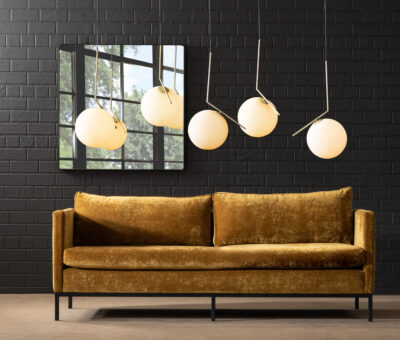Homewood: What makes ‘eco-friendly’ furniture truly sustainable?
Sustainability remains a top priority in 2025 interior design trends. However, the term “eco-friendly” is often used loosely, making it important to understand what true sustainable furniture entails to make an informed decision in your buying process.
Let’s take a look at What Makes Eco-Friendly Furniture Truly Sustainable
Here are some key factors that should be considered before calling furniture “sustainable”.
-
Responsible Sourcing
This means using renewable resources, such as wood from responsibly managed forests, recycled materials, or non-toxic substances that do not harm the environment. Using reclaimed or alien-invasive timber also reduces the demand for deforestation.
-
Durability and Timelessness
Sustainability implies that products are built to last, avoiding the wasteful cycle of frequent replacement. Durable furniture also tends to be timeless in design, avoiding trends that go quickly out of style and lead to unnecessary waste.
-
Craftsmanship and Low-Impact Manufacturing
The production process should minimise environmental impact. This involves efficient manufacturing practices that reduce waste, energy consumption, and harmful emissions. It also includes labour practices that ensure fair treatment and safe conditions for workers.
-
Aesthetic and Functional Longevity
Sustainable furniture should maintain its functional and aesthetic value over time. This involves designing pieces that are versatile and can adapt to various spaces and needs, reducing the likelihood of disposal due to changing trends or functions.
-
End-of-Life Considerations
Consideration for a product’s end-of-life is crucial in sustainable furniture. This can mean designing for recyclability, using biodegradable materials, or offering take-back or trade-in programmes to ensure furniture doesn’t end up in landfills. True sustainability considers what happens when furniture reaches the end of its use.
Ask yourself:
- If it scratches or cracks, can it be repaired instead of thrown away?
- Is it made of solid wood that can be sanded and refinished, or chipboard that cannot?
The Homewood Sustainability Story
6 years ago, Homewood’s founder and director, Ian Perry, made a call to change the way furniture was made to reduce the brand’s contribution to a global deforestation crisis.
The question was asked, “Surely there’s a way to craft beautiful, durable hardwood furniture without costing the earth?”
The answer came in the form of Homewood’s Amanzi-conscious collection, made exclusively of timber sourced from alien-invasive species, boasting the same stunning aesthetics and durability
Through a collaboration with the Working for Water Programme (WfW), Homewood repurposes these alien-invasives such as Cottonwood and Blackwood— removed to protect local ecosystems— into high-quality luxury furniture. This process not only protects water reserves but also ensures that every Homewood creation is both beautiful and environmentally responsible.
Fast forward to today, and Homewood is proud to say it manufactures furniture exclusively from these timbers.
To learn more about Homewood’s approach to sustainability, visit the website or read the blog here.
Be inspired more here.
You might also like...
-
SHF: Creating Bright Accent Moments

Every home deserves a moment that makes you pause—a space where sophistication meets surprise. “Bright Accent Moments” are those carefully curated flashes of color, texture, ...
-
Moroso x Lane Crawford: A Sculptural Showcase of Italian Design at Pacific Place Hong Kong

This September, Hong Kong welcomes an extraordinary meeting of Italian artistry and contemporary design as Moroso unveils its exclusive installation for Lane Crawford Bespoke Italia ...
-
Roche Bobois Unveils The Latest Collection

Roche Bobois unveils its latest collection—a stunning showcase of creativity, craftsmanship, and collaboration with some of the world’s most celebrated designers. From the sculptural elegance ...
-
Elevate Your Cabinets with Press Up Industries’ Clear Acrylic Pull Handle

Introducing the latest innovation from Press Up Industries: the 12 mm Clear Acrylic Cupboard Pull Handle, crafted with exceptional precision and unmistakable contemporary appeal. ...



























